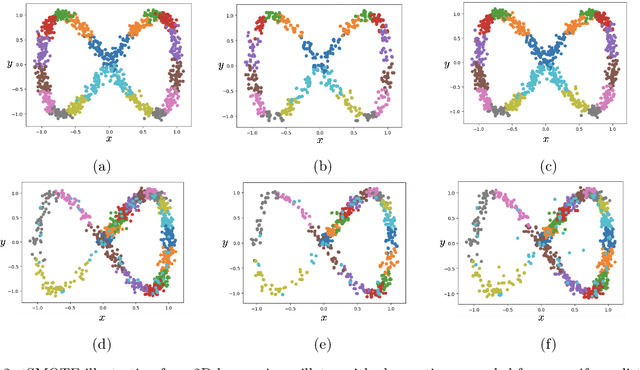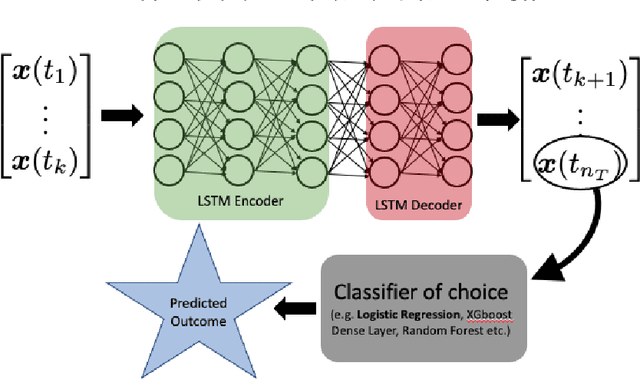Andrew Baumgartner
Imputing Missing Observations with Time Sliced Synthetic Minority Oversampling Technique
Jan 14, 2022



Abstract:We present a simple yet novel time series imputation technique with the goal of constructing an irregular time series that is uniform across every sample in a data set. Specifically, we fix a grid defined by the midpoints of non-overlapping bins (dubbed "slices") of observation times and ensure that each sample has values for all of the features at that given time. This allows one to both impute fully missing observations to allow uniform time series classification across the entire data and, in special cases, to impute individually missing features. To do so, we slightly generalize the well-known class imbalance algorithm SMOTE \cite{smote} to allow component wise nearest neighbor interpolation that preserves correlations when there are no missing features. We visualize the method in the simplified setting of 2-dimensional uncoupled harmonic oscillators. Next, we use tSMOTE to train an Encoder/Decoder long-short term memory (LSTM) model with Logistic Regression for predicting and classifying distinct trajectories of different 2D oscillators. After illustrating the the utility of tSMOTE in this context, we use the same architecture to train a clinical model for COVID-19 disease severity on an imputed data set. Our experiments show an improvement over standard mean and median imputation techniques by allowing a wider class of patient trajectories to be recognized by the model, as well as improvement over aggregated classification models.
 Add to Chrome
Add to Chrome Add to Firefox
Add to Firefox Add to Edge
Add to Edge